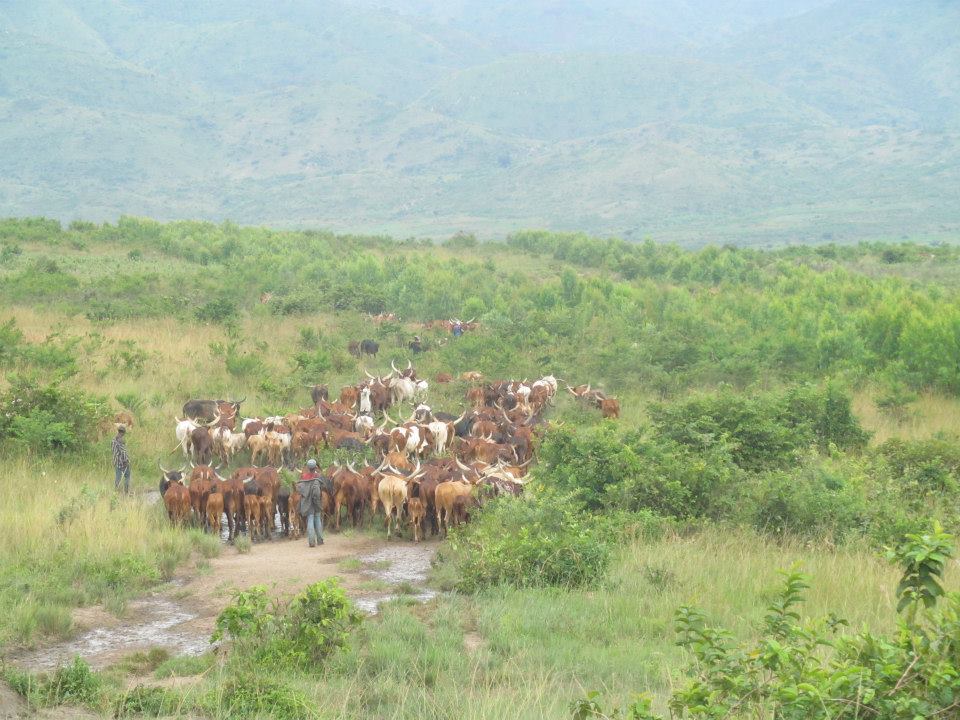On the night of June 6, up to 37 people were killed, most hacked to death, in the village of Mutarule in South Kivu, eastern Democratic Republic of Congo (DRC). Some were attacked in their homes, while some were found inside the local church. The victims included several children and pregnant women.
The governor of South Kivu told Reuters, “It was about a dispute over cows… The problem is that everyone in this area carries a weapon.” The BBC reported the incident as an “ethnic raid,” and the UN News Service referred to it as “inter-ethnic violence” and a “cattle rustling” incident.
The victims of this attack belonged to the Bafuliiru community, usually described as a “tribe” or an “ethnic group.” However, it may help to think of this, at least in part, as a historically and socially constructed political identity. Jean-Louis Nzweve, a researcher at the Catholic University of Graben at Butembo in North Kivu, recently explained to me that the territory of Uvira in South Kivu is divided into three administrative entities led by customary authorities: Bavira, Bafuliiru, and Barundi — though the latter’s legitimacy is contested. He said the available historical evidence suggests that the Barundi, before colonization, lived under the jurisdiction of the Bafuliiru in what is now South Kivu.
Nzweve continued:
However, the Belgians re-created the chiefdoms, and permitted the Barundi to be emancipated from the tutelage of the Bafuliiru; a historical fact that the Bafuliiru prince has never been willing to accept. In the aftermath of independence, the Bafuliiru argued for the abolition of the Barundi chiefdom. Successfully, in a way, since the name of the chiefdom has changed to ‘Chiefdom of the Ruzizi Plain.’ Until today the Bafuliiru advocate outright transformation of the Barundi chiefdom within the sector — a sector is an administrative unit of the same level as the chiefdom, but governed by a state official. This is the main point of conflict in the Ruzizi Plain, opposing the Bafuliiru and the Barundi…
As in Rwanda and Burundi, the Congo Barundi community consists of a Hutu majority and Tutsi minority in power. Over the years, many Hutu inter-married and integrated with the Bafuliiru, and they prefer to identify as Bafuliiru. They would like to get rid of their Tutsi prince. Thus, the Barundi-Bafuliiru conflict conceals the internal conflict (Tutsi-Hutu) within the Barundi community.
This little history lesson is important, because it shows how violence in eastern Congo is not always simply a matter of armed groups competing over natural resources, and cannot even be reduced to a simple narrative dependent on “tribal” or “ethnic” rivalry. It’s also important for understanding the political dynamics that continue to play out in this region, in both highly localized contexts and cross-border ones linked to broader political conflicts.
In 2012, tensions over the political struggle in the Ruzizi Plain culminated in the assassination of the Mwami (prince) of the Barundi. More recently, on June 2, twelve of the seventeen people suspected of carrying out the assassination were identified by a military tribunal which was set to reconvene on June 9. It is unclear whether the attack at Mutarule was in any way connected to this trial beginning, two years after the assassination.
The current Mwami of the Barundi condemned the massacre at Mutarule and said those responsible should be severely punished. The local church representative appealed for peace, asking the population to bury the hatchet of war and search together for ways out of the cycle of violence. The provincial authorities said an investigation is underway to find those responsible. MONUSCO has condemned the violence and deployed peacekeepers to Mutarule to help authorities “restore calm.”
Yet characterizing this massacre as simply an “ethnic” or “cattle rustling” attack belies its political components. As Christoph Vogel and Josaphat Musamba Bussy put it in their analysis on Vogel’s blog, every community in the territory is armed, and in the Ruzizi Plain and Moyens-Plateaux of Uvira there are easily 20 groups and factions supported by local leaders, unsuccessful politicians, and other “political arsonists” who find it advantageous to use narratives about “ethnicity” to create mistrust within and between communities. They note that it is the political reactions to the massacre, even more than the massacre itself, that will potentially worsen the climate of mistrust between communities. On the Eastern DRC Reconciliation and Development Forum, peace activist Ntanyoma R. Delphin writes that, furthermore, trying and prosecuting the criminals responsible is not enough — underlying factors that lead to violence, such as identity cleavages and the need for land reform, must also be dealt with through intra- and inter-community dialogue.
If the international community is to play a positive role in helping authorities restore calm, they will have to be careful not to reproduce the very narratives that some politicians use to rally support and stoke animosity between different communities.
